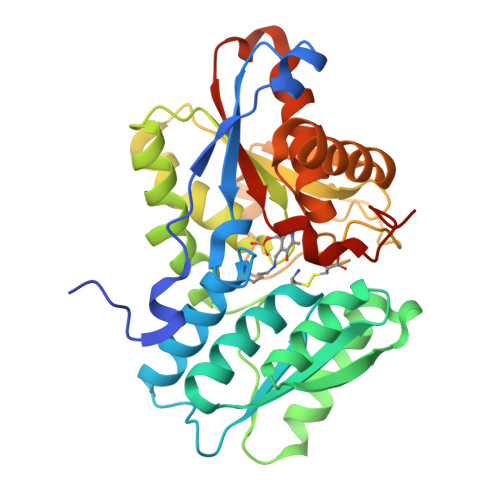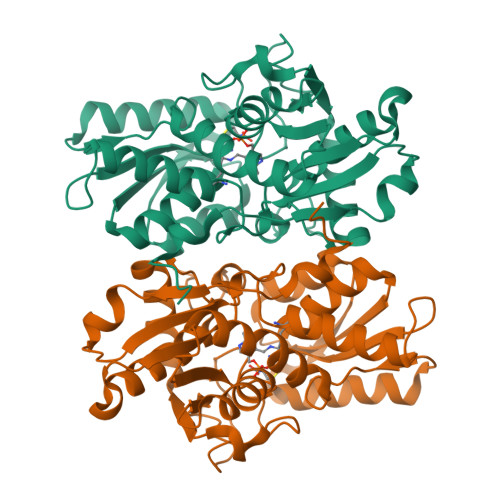Structural and biochemical analyses of Microcystis aeruginosa O-acetylserine sulfhydrylases reveal a negative feedback regulation of cysteine biosynthesis.
Lu, M., Xu, B.Y., Zhou, K., Cheng, W., Jiang, Y.L., Chen, Y., Zhou, C.Z.(2014) Biochim Biophys Acta 1844: 308-315
- PubMed: 24275508
- DOI: https://doi.org/10.1016/j.bbapap.2013.11.008
- Primary Citation of Related Structures:
4LMA, 4LMB - PubMed Abstract:
O-acetylserine sulfhydrylase (OASS) catalyzes the final step of cysteine biosynthesis from O-acetylserine (OAS) and inorganic sulfide in plants and bacteria. Bioinformatics analyses combined with activity assays enabled us to annotate the two putative genes of Microcystis aeruginosa PCC 7806 to CysK1 and CysK2, which encode the two 75% sequence-identical OASS paralogs. Moreover, we solved the crystal structures of CysK1 at 2.30Ǻ and cystine-complexed CysK2 at 1.91Ǻ, revealing a quite similar overall structure that belongs to the family of fold-type II PLP-dependent enzymes. Structural comparison indicated a significant induced fit upon binding to the cystine, which occupies the binding site for the substrate OAS and blocks the product release tunnel. Subsequent enzymatic assays further confirmed that cystine is a competitive inhibitor of the substrate OAS. Moreover, multiple-sequence alignment revealed that the cystine-binding residues are highly conserved in all OASS proteins, suggesting that this auto-inhibition of cystine might be a universal mechanism of cysteine biosynthesis pathway.
Organizational Affiliation:
Hefei National Laboratory for Physical Sciences at the Microscale and School of Life Sciences, University of Science and Technology of China, Hefei, Anhui 230027, People's Republic of China.


















